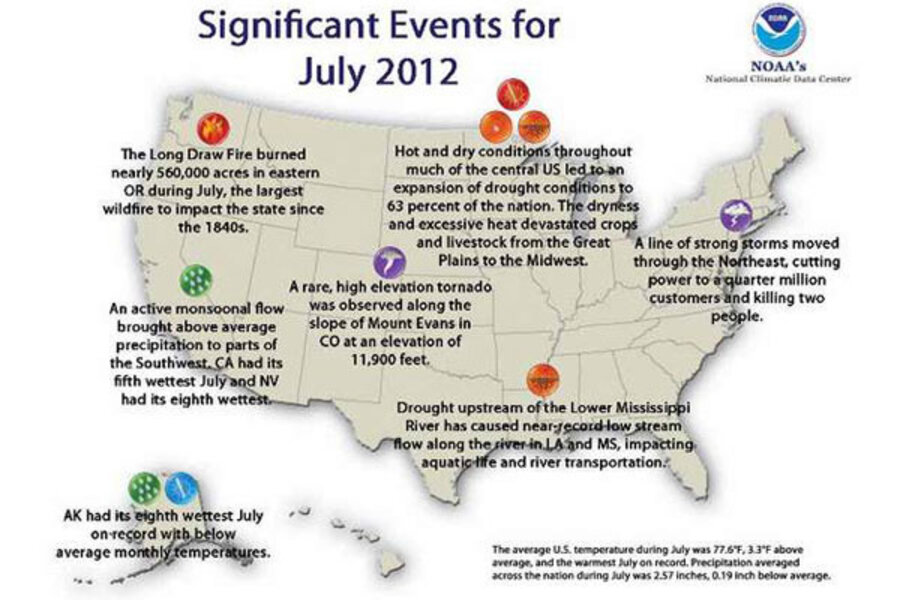July was hottest month in US on record, reports NOAA
Loading...
Last month was a record setter. July was the hottest month on record for the continental United States since record keeping began in 1895.
Last month's average temperature, 77.6 degrees Fahrenheit (25.3 degrees Celsius) edged past the previous record holder, July 1936, which hit 77.4 degrees F (25.2 degrees C), according to U.S. weather records.
This record-breaking warmth in July contributed to the warmest 12-month period the lower 48 states have experienced since the late 19th century, the U.S. National Oceanographic Atmospheric Administration (NOAA) reported today (Aug. 8).
The previous record, July 1936, was set at a time when the nation was experiencing a multi-year drought, which aggravated the heat. On the other hand, wetter weather tends to mean cooler temperatures.
During July, near-record dry conditions were present for the middle of the country, with the drought footprint expanding to cover nearly 63 percent of the continental United States, the U.S. Drought Monitor reported. [Dry and Dying: Stark Images of Drought]
However, this summer's drought has not been as long-standing as that of the 1930s, leading to speculation that, in spite of a trend toward unprecedented warmth, this year could not compete with the Dust Bowl era.
Prior to July, most other records set in the 1930s had already been exceeded, and now, that too has been broken, Kevin Trenberth, a senior scientist the National Center for Atmospheric Research in Boulder, Colo., told LiveScience in an email.
"By itself this is not such a major feat, but the fact that the first seven months of the year is the hottest on record is much more impressive from a climate standpoint, and highlights the fact that there is more than just natural variability playing a role: Global warming from human activities has reared its head in a way that can only be a major warning for the future," Trenberth wrote.
"No, it won't be like this next year, but these conditions will likely occur somewhere else. And the odds of them occurring in the U.S. have increased," Trenberth wrote.
Climate scientists describe global warming as having an effect like a loaded die, favoring the odds of more extreme weather, such as more heat waves.
However, climate scientists do differ on how much heat waves can be attributed to human-caused climate change, since natural fluctuations are integral to weather.
For instance, studies have come to differing conclusions about the role of global warming in the heat wave that hit Russia in 2010.
As for droughts in the continental United States, they are linked with La Niña conditions, or cooler-than-average ocean surface temperatures in the equatorial Pacific, part of a naturally fluctuating climate pattern.
Follow Wynne Parry on Twitter @Wynne_Parry or LiveScience @livescience. We're also on Facebook & Google+.
Copyright 2012 LiveScience, a TechMediaNetwork company. All rights reserved. This material may not be published, broadcast, rewritten or redistributed.







